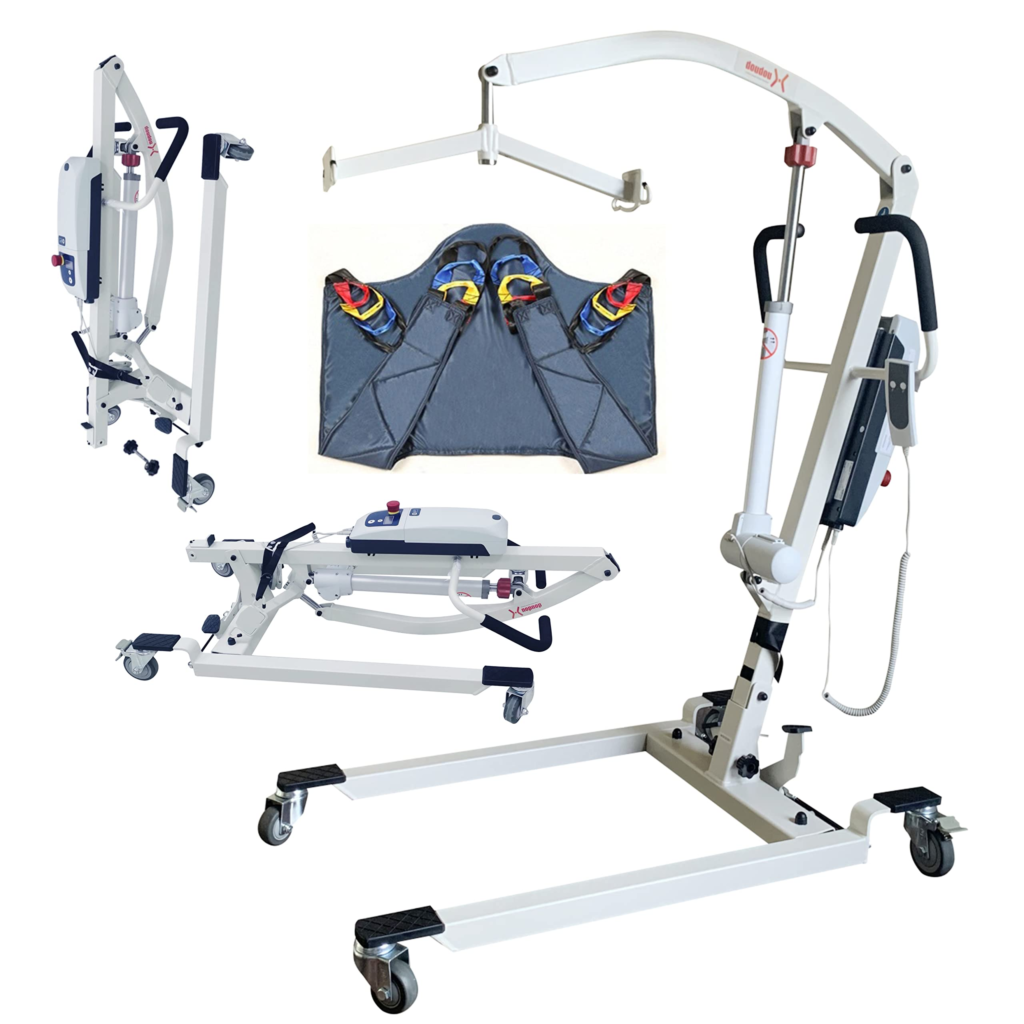
Healthcare professionals who engage in patient handling as part of their daily tasks face numerous challenges. While mechanical lifts have revolutionized patient movement by mitigating ergonomic risks tied to manual handling, they introduce their own set of workplace hazards.
Mechanical lifting systems are widely utilized in hospitals, long-term care facilities, and private homes to assist with moving and repositioning patients with limited mobility. These systems encompass various types, such as wheeled hoists, stationary hoists, ceiling tracks with motors, sit/stand aids, and bath lifts.
Despite the benefits, employing patient lifts brings forth potential dangers to both workers and patients. Suspended components can fall, and loads may be dropped. The risk extends to equipment failure, structural issues, and even electric shocks. Moreover, if a hoist malfunctions, attendants attempting to catch falling patients could strain their bodies.
Outlined below are practical tips and best practices aimed at preventing injuries to attendants operating patient lifts.
Injury Prevention: Implementation of a Comprehensive Program
Adopting an ergonomic safe patient handling program is pivotal in curtailing musculoskeletal injuries stemming from prolonged patient transfers and immediate injuries occurring during transfers. This program requires buy-in and dedication from management, with enhanced efficacy achievable through collaboration with union representatives, health and safety committees, and workers.
Components of the ergonomic safe patient handling program encompass analyzing needs, standardizing patient assessment criteria, devising decision trees for uniform actions, identifying necessary controls for specific tasks or patient requirements, and potentially instituting a “no-lift” policy when feasible.
A “no-lift” policy mandates the avoidance of manual handling whenever possible. This approach proves successful only when supported by appropriate infrastructure, including technical solutions, lifting equipment, and adequate training to recognize risks and execute safe patient transfers.
Adherence to Regulations
Familiarizing oneself with and adhering to legal stipulations pertaining to lift use in the workplace is essential. These regulations could encompass providing suitable lifting equipment, adequately training employees in its usage, proper installation of lifting machinery, adherence to testing and operational guidelines, and adherence to manufacturer or engineer specifications for servicing, maintenance, and repairs.
Safeguarding with Slings
Slings are integral to the patient lifting system. Using the correct sling approved by the patient lift manufacturer is paramount. Clear indication of the safe working load should be present on both the lift and the sling. Special attention should be paid to sling compatibility with lift load limits and patient weight. Regular sling maintenance in line with manufacturer guidelines is crucial. Inspection should identify fraying, stress, or damage, and any signs of wear should prompt discontinuation of use.
Rigorous Equipment Inspections
Manufacturer specifications dictate the frequency of periodic and pre-use equipment inspections. Documenting completion of periodic inspections is vital. Pre-use inspections ensure correct part compatibility and configuration, adherence to load restrictions, and detection of visible equipment damage that could lead to failures. Implementing a system to label and remove faulty equipment from service until repaired or replaced is prudent.
Safety Guidelines for Patient Lift Users
Injury reduction hinges on not just equipment and staffing, but also on transfer approach. Share the following safety tips with all staff operating patient lifts:
- Thorough training in lift operation is imperative.
- Evaluate patients before transfers and ensure a clear path.
- Verify the stability of destination furniture and aids.
- Secure all clips, latches, and hanger bars during operation.
- Maintain the patient lift’s base in the widest open position for stability.
- Confirm the patient’s arms are within sling straps.
- Lock wheels on receiving devices like wheelchairs, stretchers, beds, or chairs.
- Adhere to weight limits for both lift and sling.
- Avoid spine rotation; move the entire body during transfers.
- Engage abdominal muscles, maintain a straight back, and use leg muscles.
- Stand close to the patient, ensure stable footing, and communicate during transfers.
- Adhere to sling maintenance and safety instructions.
- Implement a consistent inspection checklist to identify worn or damaged parts requiring prompt replacement.
Importance of Workplace Safety Protocols
Regardless of the workplace size, implementing a comprehensive code of practice or safe work procedure for hoist operation, inspection, and maintenance is beneficial. Ultimately, this prioritizes the safety of healthcare workers, patients, and clients.
By diligently following these guidelines and integrating safety measures, healthcare facilities can significantly mitigate risks associated with patient lifts, fostering the safety and well-being of both healthcare workers and patients.
contact benhospitalbedrental.com for all Hoyer lift rental